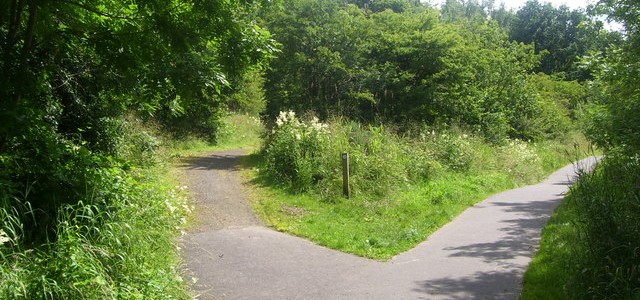 I started this blog in September 2013 with the metaphor and an image of the “STEM pipeline.” The metaphor assumes that all potential STEM professionals follow a similar career path, and those who don’t accomplish certain milestones or lack key attributes “leak out” of the pipeline.
Cannady, Greenwald, and Harris make a convincing argument that a new metaphor is needed in the 2014 article, “Problematizing the STEM Pipeline Metaphor: Is the STEM Pipeline Metaphor Serving Our Students and the STEM Workforce?” in Science Education. Educational policy and programs have been based on the pipeline metaphor since the 1990s, but gains in the number of STEM professionals have been minimal, especially among minorities and women (p. 444).
After analyzing data from the National Educational Longitudinal Study of the Eighth-Grade Class of 1988, the researchers have proposed a metaphor of multiple pathways. High school math preparation and interest in STEM majors and/or careers are two attributes often correlated with progress through the pipeline. Amazingly, Cannady et al. discovered that of the 430 people from the 1988 cohort who went into STEM careers, 72.7% of them neither took calculus in high school nor expressed early interest in a STEM major or career (p. 451). Furthermore, it was twice as likely for the individuals who eventually entered the computer or life science workforces to lack early math preparation and STEM interest, than those who pursued physical science, mathematics, or engineering careers (p. 453). The paper elucidates other pathways, but these were the most striking results.
In my exploration of STEM retention issues, I have been discouraged to notice that programs targeting STEM undergraduates over past decades only reach a small number of students and aren’t sustainable without constant grant support, which partly explains why we’ve seen a marginal increase in STEM professionals. I agree with Cannady et al. that an alternative metaphor would be helpful to generate fresh perspectives on the development of STEM professionals and new ideas for encouraging students who reach that destination by a variety of paths.
Image attribution: Park Pathways for NS7357© Copyright Ross Watson and licensed for reuse under this Creative Commons Licence
I started this blog in September 2013 with the metaphor and an image of the “STEM pipeline.” The metaphor assumes that all potential STEM professionals follow a similar career path, and those who don’t accomplish certain milestones or lack key attributes “leak out” of the pipeline.
Cannady, Greenwald, and Harris make a convincing argument that a new metaphor is needed in the 2014 article, “Problematizing the STEM Pipeline Metaphor: Is the STEM Pipeline Metaphor Serving Our Students and the STEM Workforce?” in Science Education. Educational policy and programs have been based on the pipeline metaphor since the 1990s, but gains in the number of STEM professionals have been minimal, especially among minorities and women (p. 444).
After analyzing data from the National Educational Longitudinal Study of the Eighth-Grade Class of 1988, the researchers have proposed a metaphor of multiple pathways. High school math preparation and interest in STEM majors and/or careers are two attributes often correlated with progress through the pipeline. Amazingly, Cannady et al. discovered that of the 430 people from the 1988 cohort who went into STEM careers, 72.7% of them neither took calculus in high school nor expressed early interest in a STEM major or career (p. 451). Furthermore, it was twice as likely for the individuals who eventually entered the computer or life science workforces to lack early math preparation and STEM interest, than those who pursued physical science, mathematics, or engineering careers (p. 453). The paper elucidates other pathways, but these were the most striking results.
In my exploration of STEM retention issues, I have been discouraged to notice that programs targeting STEM undergraduates over past decades only reach a small number of students and aren’t sustainable without constant grant support, which partly explains why we’ve seen a marginal increase in STEM professionals. I agree with Cannady et al. that an alternative metaphor would be helpful to generate fresh perspectives on the development of STEM professionals and new ideas for encouraging students who reach that destination by a variety of paths.
Image attribution: Park Pathways for NS7357© Copyright Ross Watson and licensed for reuse under this Creative Commons Licence
Related


Leave a Reply